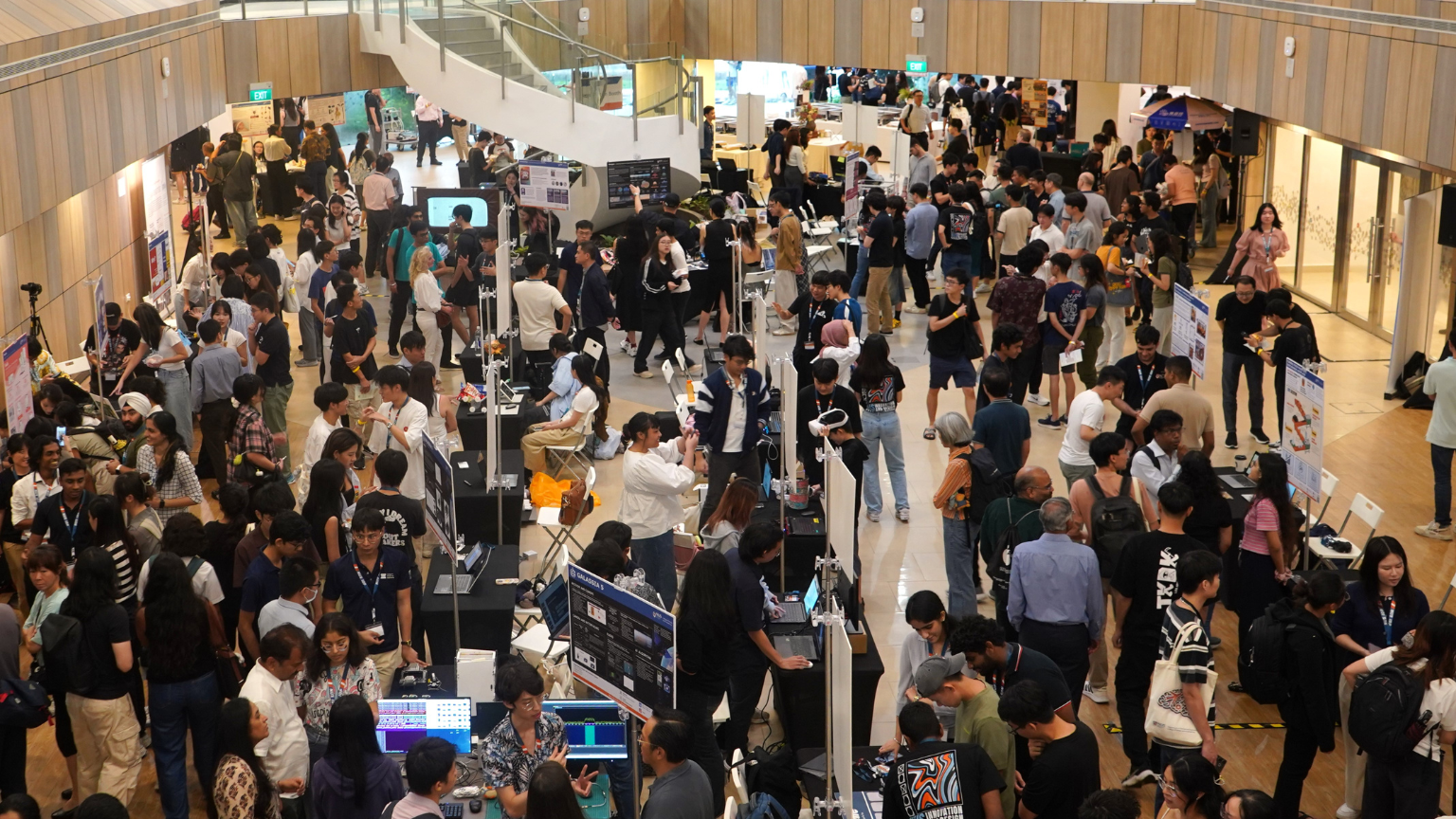
The EA atrium was packed with students and visitors for EDIC Project Showcase 2024. As part of their project courses, Year 3 students in the Innovation & Design Programme and students in the MSc Engineering Design & Innovation programme were tasked to come up with an innovative product solution to solve an identified problem over two semesters. Adopting a hands-on approach, they worked with external stakeholders on each stage of the design process, from the conceptualisation to the development of their product.
Held on 15 November 2024, the showcase was a culmination of their hard work over the past two semesters. The showcase featured over 30 projects across a wide range of categories, exploring areas such as Agritech and Sustainability, Immersive Reality, Paediatric Care and Medtech Innovation, Robotics and many more. The students also had the opportunity to present their projects to visitors, who then voted for their favourite projects.
The “Most Fun Project” award went to SAM: Species Assessment Mapper, an autonomous robot that locates invasive creepers using its cameras and the Global Navigation Satellite System (GNSS). SAM helps detect the location of invasive creepers so that users can view the information on a web app and plan for remedial actions to prevent the creepers from spreading
Developed by a team of Computer Science, Engineering Science, Mechanical Engineering, and Computer Engineering students, SAM is built on top of the B.O.B. (Box on Bot) project, which won the grand prize at the GNSS Innovation Challenge 2022. "We worked with Space Faculty and Singapore Land Authority, who hosted the GNSS Innovation Quest 2024 which we were lucky enough to participate in,” said Chu Wei Rong (Computer Science). The project was named the overall winner of the Advanced Category in the GNSS Innovation Quest on 22 November 2024. Dr Tan See Leng, Minister for Manpower and Second Minister for Trade and Industry, presented the award to the team at Expand Space 2024 held at the Sands Expo and Convention Centre.
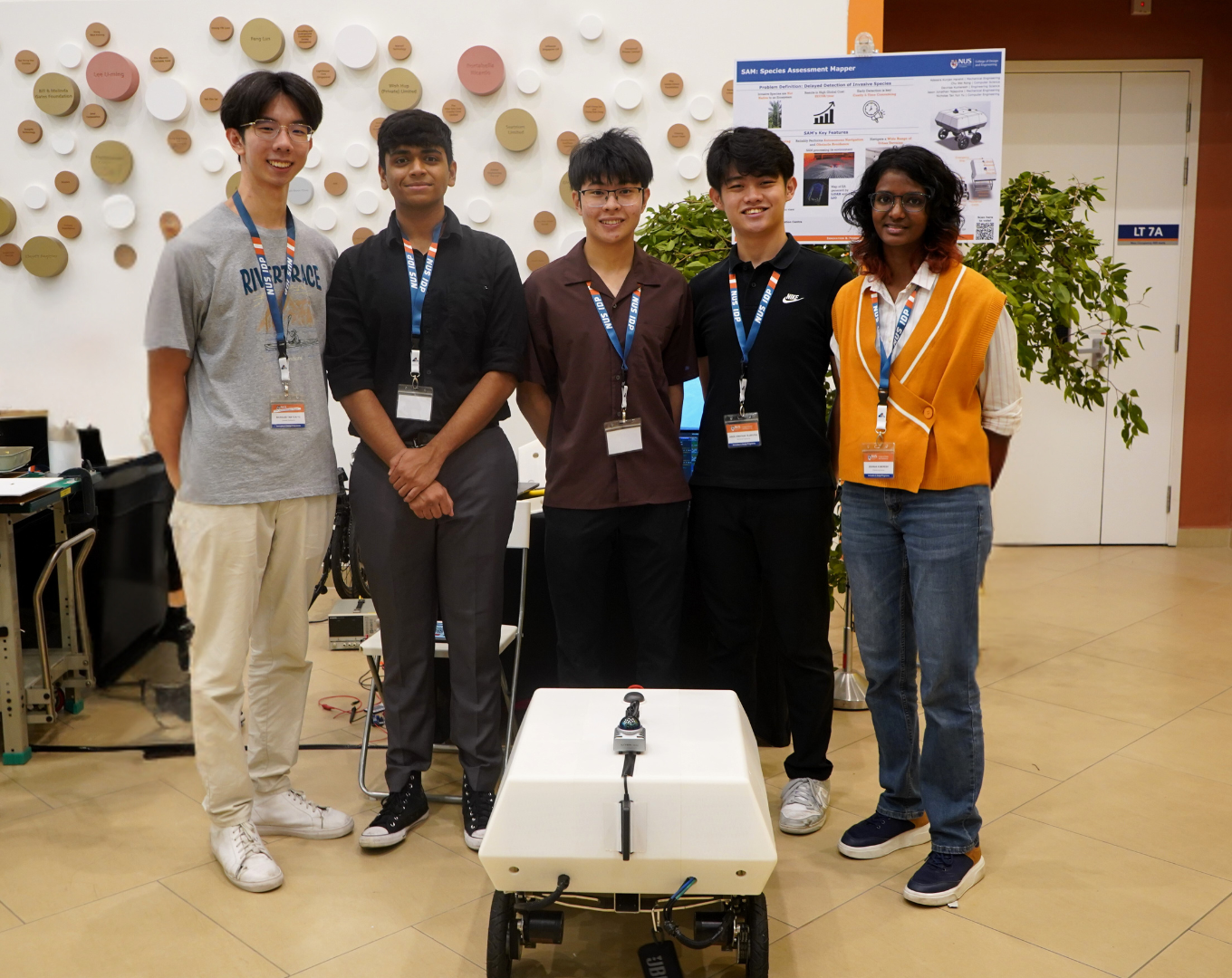
Another Robotics project that offered an insight into how we can leverage robots to help ease our lives was BoxBunny, an intelligent robot capable of responding to movements for training and sparring, which enables budding boxers to enjoy a progressive and personalised journey towards proficiency in boxing.
“We faced significant difficulties in pursuing boxing training such as not being able to receive training in-person because of the pandemic and even after the pandemic, as well as finding an affordable personal trainer,” said Mechanical Engineering student Mageshkumar Kirubasankar. He also highlighted that boxing training with another person could impose injury risks which increases downtime between consequent trainings. This spurred the team to come up with their solution, which allows users to train on their own and at their own pace.
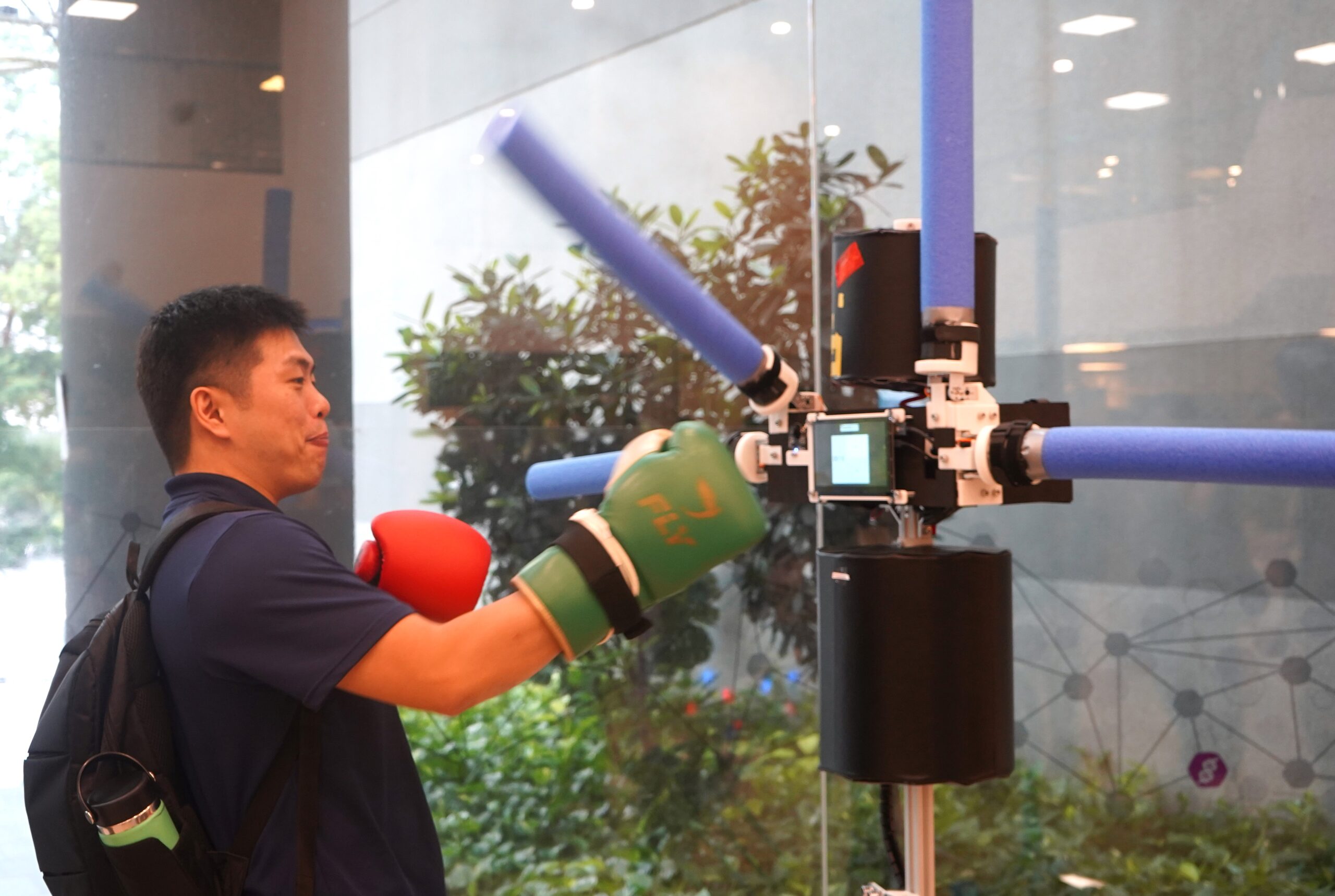
Some groups decided to focus on MedTech to develop healthcare solutions, especially in the field of paediatric care. Baby ANDI is a team of eight students who collaborated with KK Women's and Children's Hospital (KKH) to design an Accurate Nasogastric Device for Insertion (ANDI). Their project was voted as the “Most Inspiring Project”.
A niche challenge, the team was drawn to find a solution that will allow them to explore creative solutions and make the project their own. ANDI helps improve caregiver confidence by providing a realistic simulation of nasogastric tube insertion for paediatric patients. The team worked closely with KKH as their external stakeholder, which they found to be extremely valuable.
“KKH provided critical direction, supervision, and continuous support throughout the project. We even had the unique opportunity to meet directly with caregivers (parents of paediatric patients), which was essential for understanding their real experiences and challenges with nasogastric tube placement,” said Biomedical Engineering student Erica Molenberg. “Moreover, regular meetups at KKH allowed us to gather detailed feedback and refine our design to meet actual user needs. This guidance gave us clear focus, enabling us to create a truly impactful, user-centered solution.”
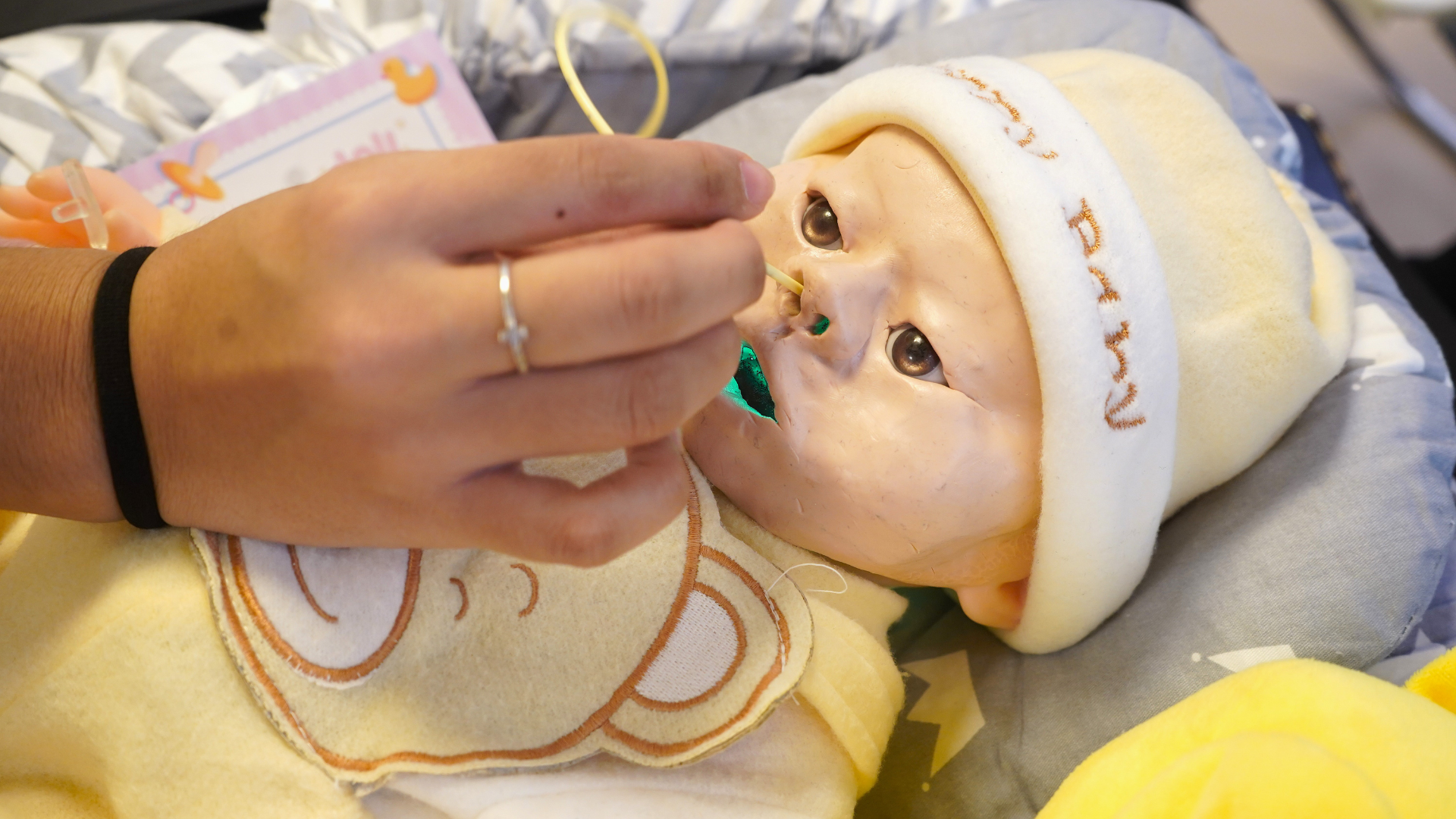
The team also credited their success to the invaluable support they received from EDIC, who provided them with access to the fully equipped Innovation & Design hub and an electronics workshop whenever they needed. Erica added that “EDIC provided immense support in overcoming our hurdles. Their resources and responsiveness to student needs made it easier to tackle technical challenges and meet our project deadlines effectively.”
While some teams chose to focus more on the product conceptualisation process and prototyping, other teams wanted to explore innovation solutions in product delivery and marketing – the later stages in an entrepreneur’s journey. Two teams had the opportunity to work together with Proctor and Gamble (P&G) to engage in client-facing projects and understand consumers’ needs in order to develop a successful product.
Under the direction of Dr Kate Lee, the teams worked on two popular product lines under P&G – SK-II and Gillette. The SK-II team aimed to bridge the awareness gap between SK-II and young consumers by transforming complex product information into an engaging, gamified TikTok filter powered by by Generative Adversarial Networks (GANs) to educate users about PITERA’s benefits to address specific skin problems.
Drawn to the opportunity to tackle real-world brand challenges, Ho Ee Hsuen (Communications and New Media) and Nicholas Chua (Biomedical Engineering) were intrigued with the idea of using augmented reality and technology to create innovative marketing solutions, especially in today’s rapidly evolving media landscape.
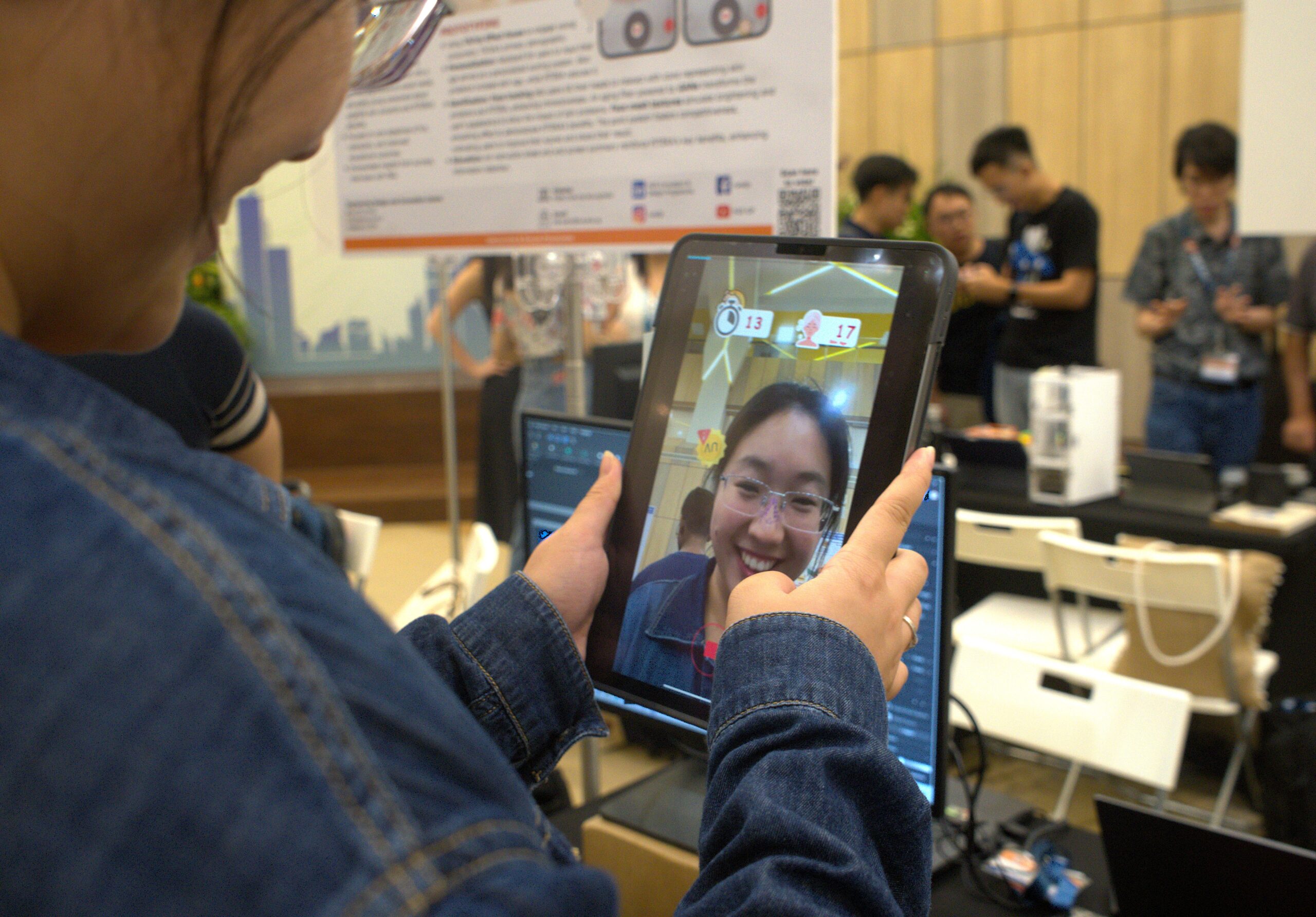
However, this came with its own set of hiccups. “Neither of us come from programming backgrounds, so we faced challenges with complex coding logic while editing the GAN files,” said Ee Hsuen. For their filter, GANs apply ageing effects based on training data. Nicholas added, “Another significant challenge was developing the keyboard module from scratch and integrating it with the other components of our gamified filter.”
The Gillette team faced similar challenges. Team member Lee Seung Jun (Chemical Engineering) added, “Since our project was entirely software-based, and none of my teammates, including myself, had prior experience in software development, we had to start from scratch.”
Inspired by skin care and cosmetic recommendation systems, the team wanted to come up with such a system for Gillette razors to provide personalised shaving solutions based on individual skin types and shaving concerns. The team also incorporated P&G’s insights on consumer behaviours to refine their app’s interface and user experience.
Having monthly check-ins with their P&G liaison played an instrumental role in helping the students refine their solution. “One potential pitfall of academic work is the tendency to overlook practical, hands-on approaches that resonate with real consumers,” said Dr Lee. “However, during our monthly meetings, Henry (P&G liaison) shared valuable insights that addressed these gaps. He emphasized the importance of incorporating more brand themes into our solutions, effectively pitching our ideas in the current market landscape, and positioning our solutions to tackle both consumer and company pain points.”









